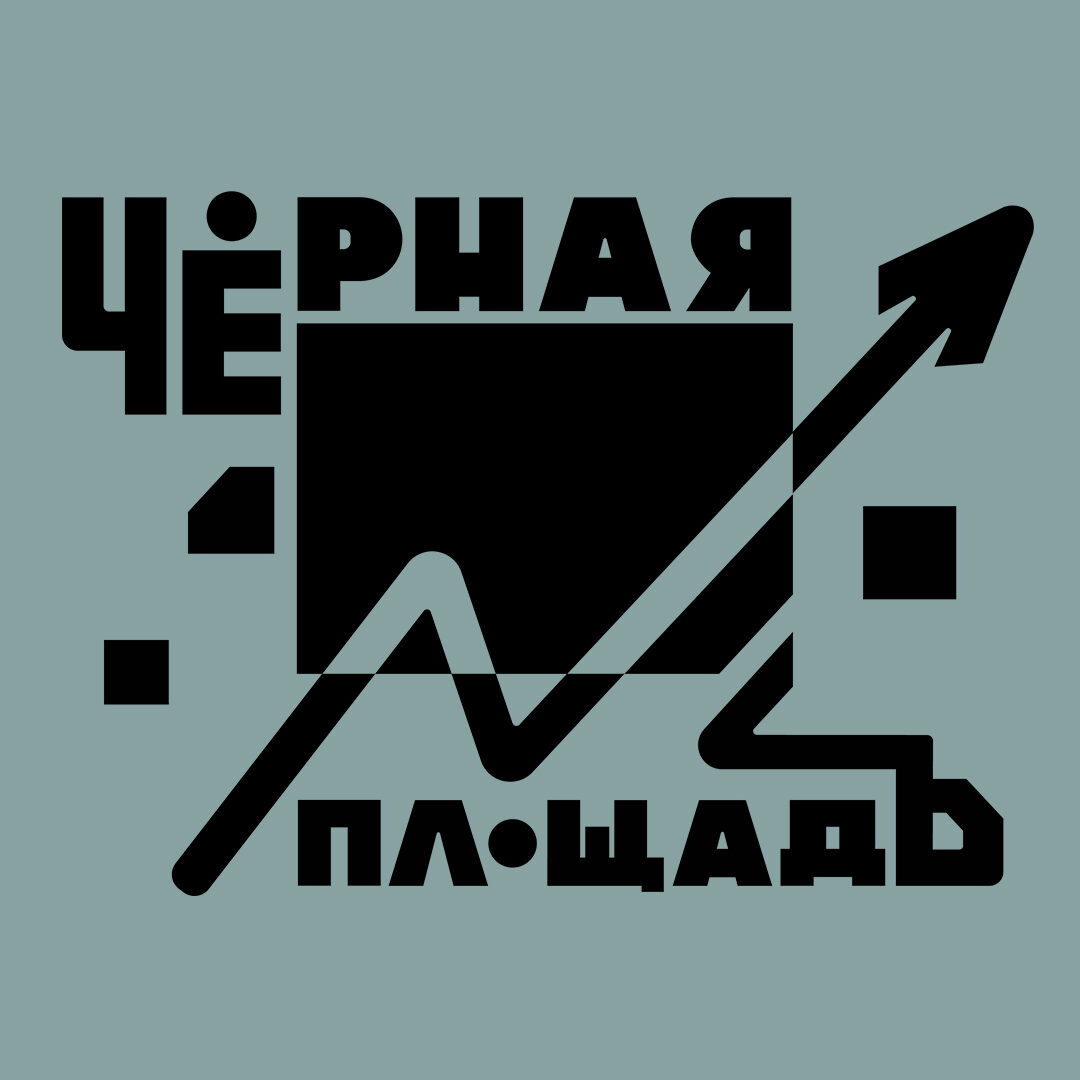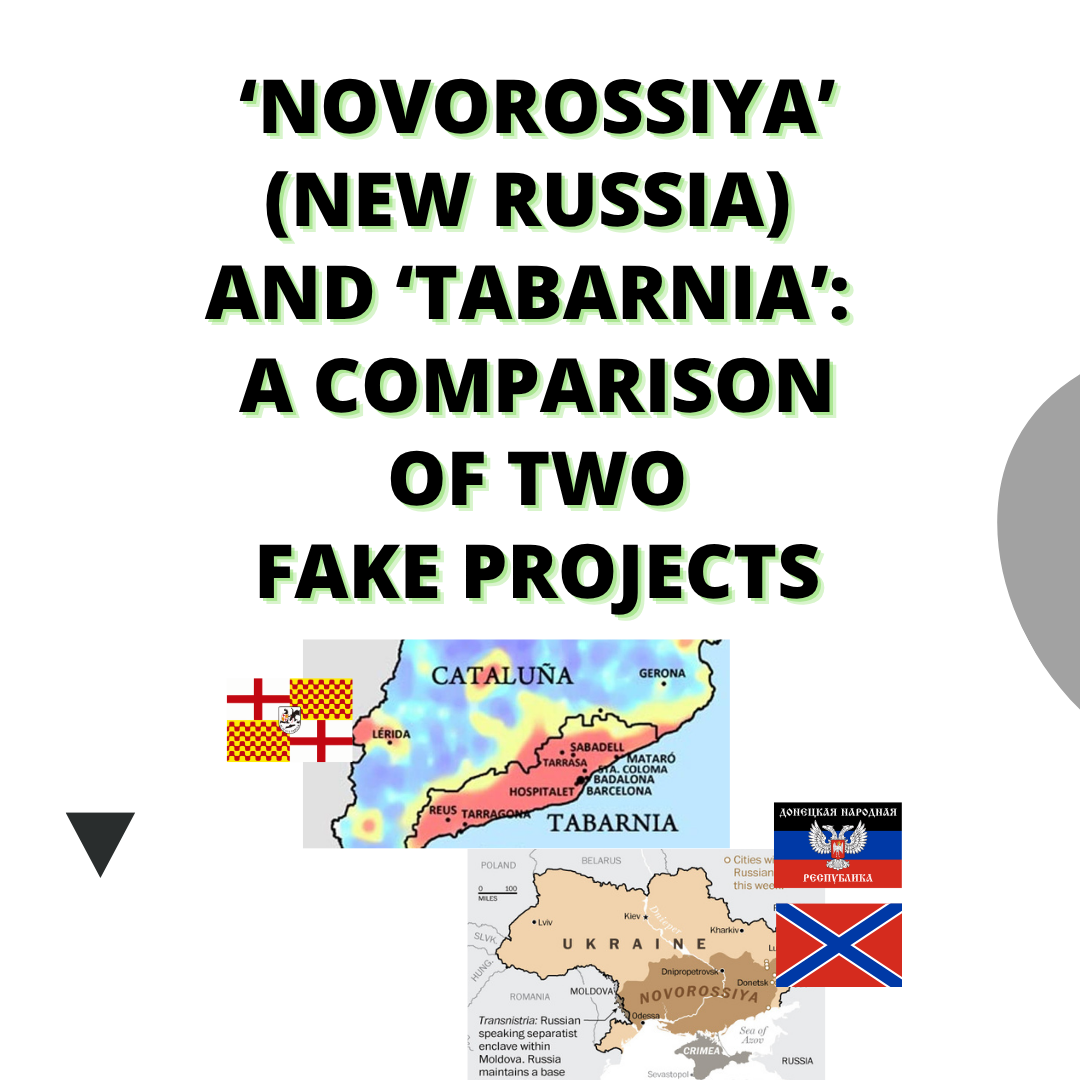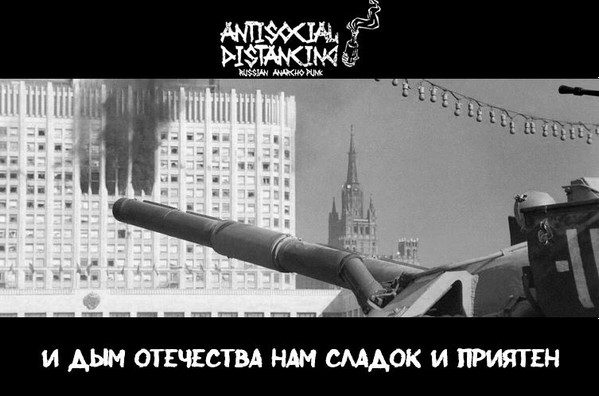Tabarnia is a satirical term coined in Spain as a counter-argument to supporters of Catalan independence. The idea was created in 2015 by contributors to the website Barcelona Is Not Catalonia, aimed at opposing the pro-independence movement.
Novorossiya (New Russia) on the other hand, is a term invented by the Putin regime and Russian intelligence services in 2014 to cover up a military intervention aimed at seizing part of Ukrainian territory.
Despite major differences in political context and scale, the Tabarnia project in Catalonia and the Novorossiya project in Ukraine share several notable features.
Unlike Novorossiya, Tabarnia was never supported by state institutions and did not involve any armed attempts to seize territory. It functioned more as a tool of political satire and pressure than as a serious political initiative.
Novorossiya ((New Russia) , by contrast, was no joke — it became a real instrument of war.
Paradoxically, Novorossiya used similar fictional and provocative narratives that had once been directed against Catalan independence supporters in the case of Tabarnia. Yet some Catalan pro-independence activists were influenced by Russian propaganda and ended up supporting Novorossiya — a project that was not satirical, but openly far-right and imperialist.
Moreover, Novorossiya gained support from many left-wing groups — particularly Stalinist factions — in Spain, Italy, and Latin American countries.
The Kremlin employed similar mechanisms in both cases: stoking political divisions, promoting alternative historical narratives, and fueling conflict around linguistic identity. But unlike in Tabarnia, in Ukraine this didn’t stop at media manipulation — Russian intelligence services escalated to full-scale military invasion, using the Novorossiya concept as a justification for aggression.
Read more in the post about the origins, similarities, and differences between these two projects.
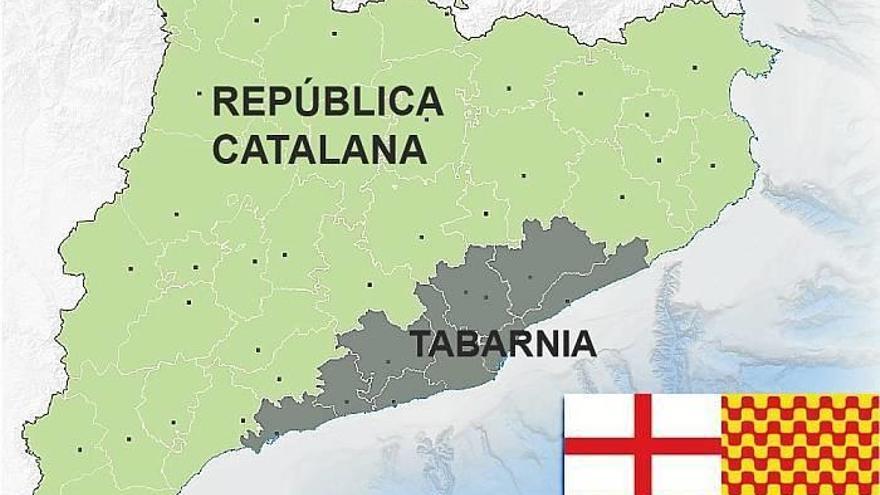
Tabarnia is a satirical concept that emerged in Spain as a response to Catalonia’s calls for independence. The name combines Tarragona and Barcelona.
The project was launched in 2015 by the team behind the website Barcelona Is Not Catalonia as a way to counter the independence movement.
It proposed the creation of a separate autonomous community within Spain — as a contrast to the Catalan independence project. In addition, the initiators claimed that Spanish-speaking residents of the region were facing linguistic discrimination.
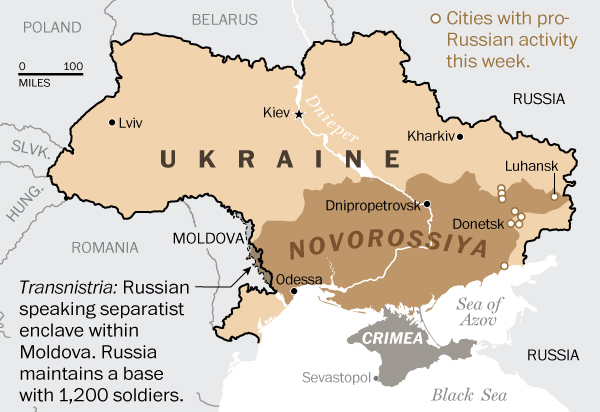
The «New Russia» project was launched in 2014 in the context of Russia’s aggression against Ukraine and was developed by the Putin regime. Its goal was to create a pro-Russian state entity in southeastern Ukraine, under full control of Moscow.
In its ideological justification, Russian propaganda actively used the myth of the “discrimination of the Russian language” in Ukraine. This narrative became a tool to legitimize the annexation of Crimea and the military intervention in Donbas.
However, at the start of the war, there was no law prohibiting the use of Russian, nor was there any forced removal of the language.

‘Novorossiya’ (“New Russia”): An Imperial and Far-Right Project
• The idea did not arise from the people but was designed by the Kremlin and intelligence services as a geopolitical operation.
“• New Russia” was not a popular rebellion but a far-right Kremlin project based on myths of the “Russian world” and the denial of the existence of an independent Ukrainian nation.
• The Kremlin instrumentalized Soviet aesthetics and antifascist rhetoric to attract sympathy from left-wing sectors while promoting an openly imperialist project.
• The pretext of “defending Russian speakers” is false: there were no real prohibitions against the Russian language in Ukraine. Its dominance in the east of the country is the result of centuries of imperial colonization and forced russification.
• In 2014, the military occupation of Donbas began as an attempt to reclaim territory that the Kremlin still perceives as its former colony.
• In 2022, Russia officially recognized the occupied territories as part of its own territory and invaded the rest of Ukraine to expand its control.
•Putin openly states that “Ukraine is Russia” and declares its seizure as part of the Russian neocolonial project.
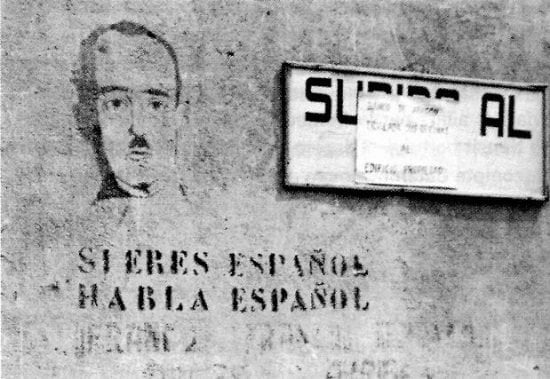
For many Catalan independence supporters, Spain represents a history of oppression — especially linguistic and cultural — intensified during the Franco regime. From this perspective, Catalonia is seen as an unrecognized nation, while Madrid acts as a centralist power hub.
Tabarnia flips this narrative with irony: its supporters claim that now the “empire” is Barcelona, which imposes the Catalan language and a singular identity. In this way, they present themselves as a Spanish-speaking minority allegedly “marginalized” within Catalonia.
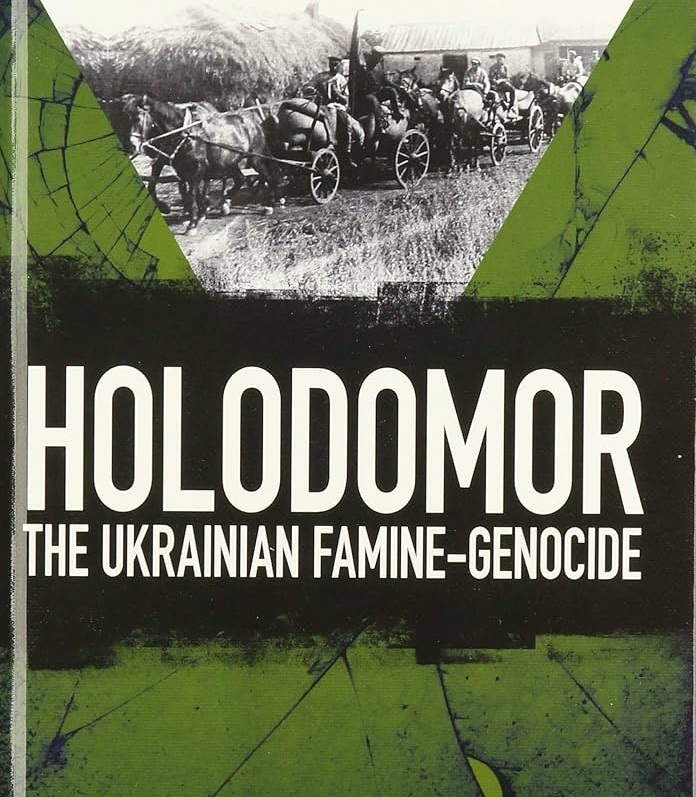
The Russian-speaking population in southeastern Ukraine is not the result of a natural process, but rather the direct consequence of a forced Russification policy carried out over centuries by the Russian Empire and the USSR.
Through violent assimilation, mass deportations, genocide, repression, the prohibition of the Ukrainian language, and deliberate colonization with Russian-speaking settlers, these regions were stripped of their Ukrainian linguistic identity.
Today, the Kremlin uses the consequences of this policy as a pretext for military aggression and imperialist intervention.
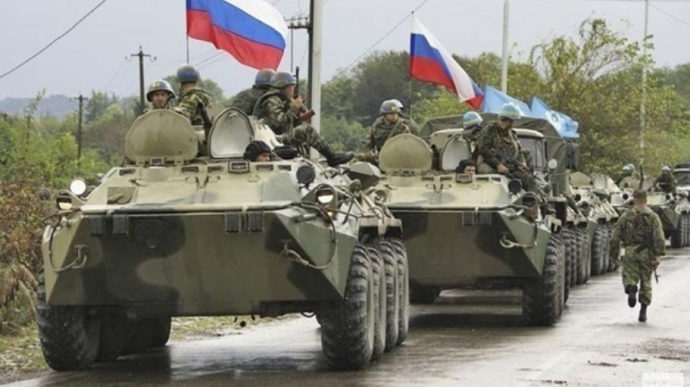
The “Novorossiya” (New Russia) project, launched in 2014, was an attempt at revanche — a return to the time when southeastern Ukraine was treated as a Russian colony.
Under the pretext of “protecting Russian speakers” — a population created by the empire itself through the imposition of Russian and the suppression of Ukrainian — the Kremlin launched an act of aggression: it occupied part of the Donbas and annexed Crimea.
Thus, Novorossiya stands as a classic example of imperial expansion and an effort to regain lost control over a former colony through the use of force.
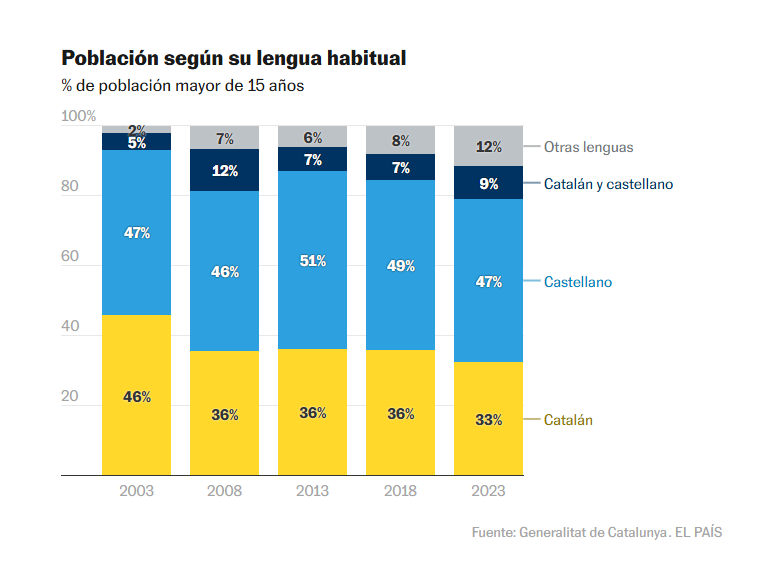
In Tabarnia, the use of Spanish is portrayed as a symbolic act of resistance against Catalan independence.
Although both languages are official and coexist in Catalonia, Tabarnia supporters claim a potential marginalization of Spanish. However, studies indicate that it is actually Catalan that has declined in social use. The Tabarnian narrative speaks of discrimination against Spanish speakers, although there is no conclusive evidence that this is systematic.
This rhetoric aims to present Tabarnia as a stronghold of Spanish identity within Catalonia.
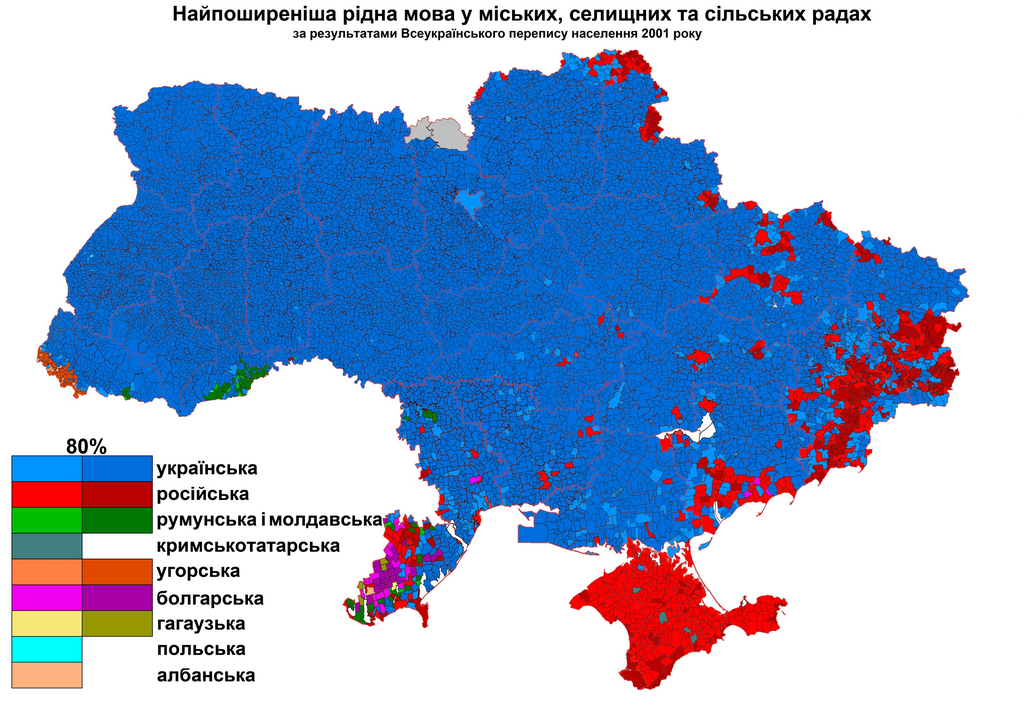
«New Russia» promoted the myth of “defending the Russian language” as a political argument, even though there were no real restrictions on its use.
Many Ukrainians are bilingual, but the Ukrainian language required protection against the historical dominance of Russian.
Russian had no official status, but it was widely spoken. This argument was used to justify the military occupation. Moreover, the strong presence of Russian in Ukraine is the result of decades of colonization and forced Russification.
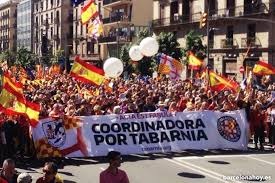
Although Tabarnia began as a political satire, over time it was adopted by more politicized groups. The idea received support from parties like the Partido Popular and became associated with speeches defending the unity of Spain and opposing independence. Therefore, although it started as irony, it ended up linked to nationalist positions and, in some cases, to the right-wing political spectrum. While it may seem innocent, this satire contains an implicit vision of the cultural superiority of Spanish over Catalan, reflecting the unifying project of Spanish nationalism.

Putin presented “New Russia” as territories that “historically belonged to Russia.” The project was also promoted by one of the key ideologists of Putin’s imperialism, the fascist philosopher A. Dugin, who advocated for uniting all Russian-speaking territories under Russian control — even through the use of force. The “New Russia” project was coordinated by Russian intelligence services, military forces, and Kremlin political technocrats.
Its flag was created in 2014 and resembles that of the Confederate States of America. Later, a modified version of the Russian Empire’s flag was adopted as the official emblem.
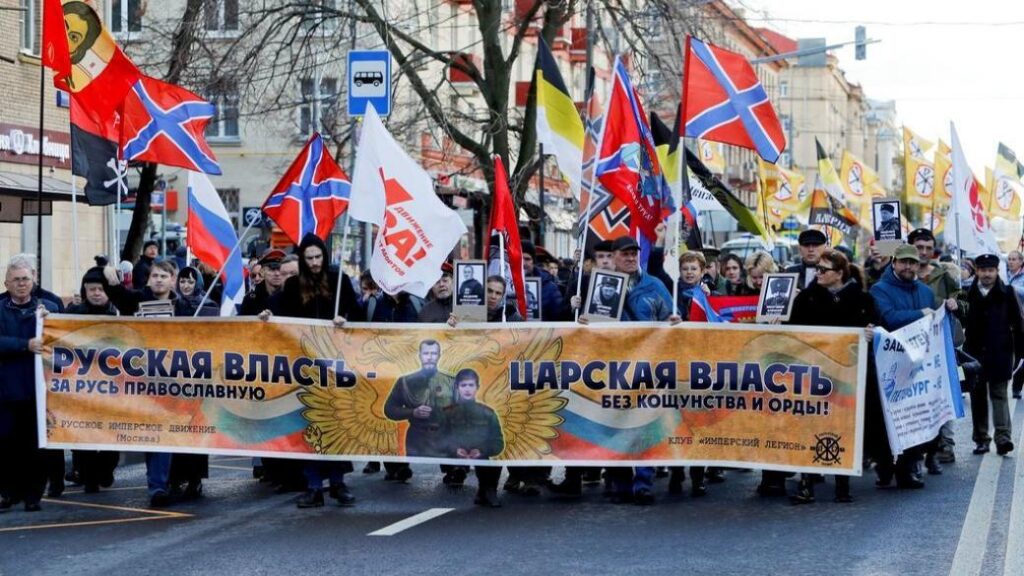
The “Novorossiya” (New Russia) project, presented by the Kremlin as supposedly “anti-fascist,” was in reality rooted in a clearly imperialist and far-right ideology.
It relied on myths about the need to “reunite Russian lands” and on denying the existence of Ukraine as an independent nation. This project was actively supported by representatives of Russian far-right and neo-Nazi movements. In Moscow, so-called “Russian Marches for Novorossiya” were held, organized with the participation of well-known nationalist and neofascist groups.
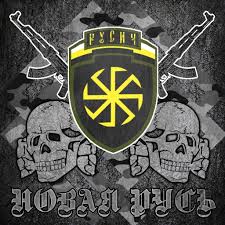
Fighting for “Novorossiya” (New Russia) were Russian soldiers, nationalists, monarchists, Orthodox fundamentalists, and neo-Nazi groups such as the “Rusich” battalion, known for its brutality and use of Third Reich symbols.
Among the project’s ideologues were the neofascist A. Dugin and FSB colonel I. Girkin, who openly stated that Ukraine must be destroyed as a country and a “new empire” built on its ruins.
The entire narrative spoke of “liberating” southeastern Ukraine from supposed “Ukrainian Nazism,” but in reality, it was an invasion aimed at bringing those lands back under Russian control, using chauvinism, militarism, and hatred toward everything Ukrainian.
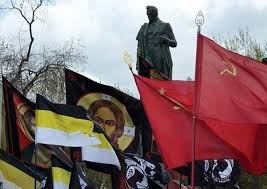
The Kremlin used Soviet symbols and “antifascist” rhetoric to deceive and appeal to the international left, especially in Europe and Latin America. Although “Novorossiya” was an imperialist and far-right project, it was presented as a form of “resistance” to gain sympathy.
At the same time, Russia cooperated with neo-fascist and nationalist groups both inside and outside the country. The red flag served as a cover for far-right imperialism.
Many sectors of the Western left, without understanding the context, repeated the Kremlin’s narrative.
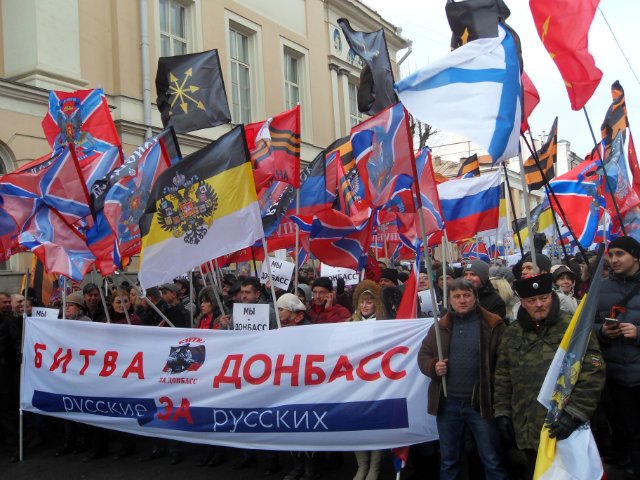
Despite the Soviet symbols and “antifascist” rhetoric, there was neither socialism nor social justice in the territories occupied by Russia.
They became far-right dictatorships: militarized, clerical, and repressive. Curfews, censorship, forced mobilization, and brutal repression were imposed. Orthodox fundamentalism serves as the regime’s official ideology.
Activists, journalists, trade unionists, and anyone who criticizes the war — even through a social media post — are persecuted. These areas turned into authoritarian enclaves ruled by fear, violence, and military propaganda. The promises of a “people’s republic” were just a cover: behind them lie nothing but imperialism, far-right ideology, and occupation.
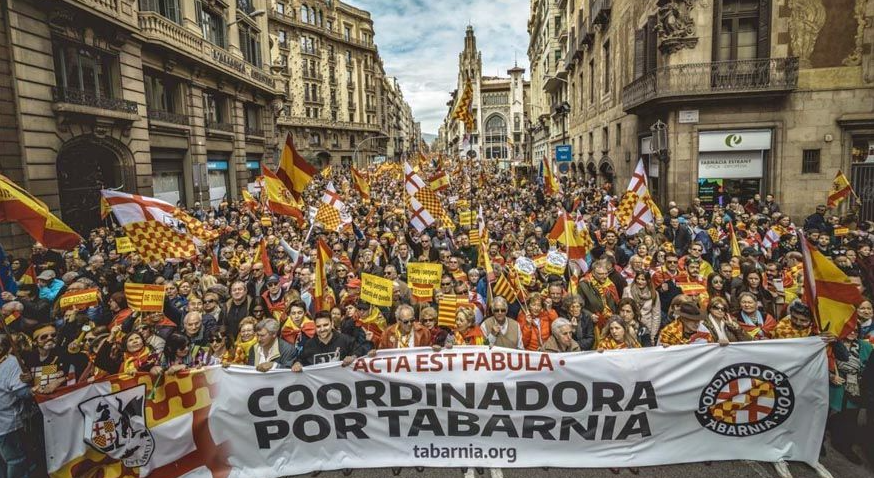
The organization “Barcelona is not Catalonia” created the flag of the proposed territory, based on the flags of Tarragona and Barcelona. On March 4, 2018, an announced demonstration exceeded all expectations, with around 15,000 attendees according to the Urban Guard and 200,000 according to the organizers.
Today, the project has lost much of its relevance and political activity. It never consolidated into a stable movement and is now mostly mentioned as a meme or historical curiosity.
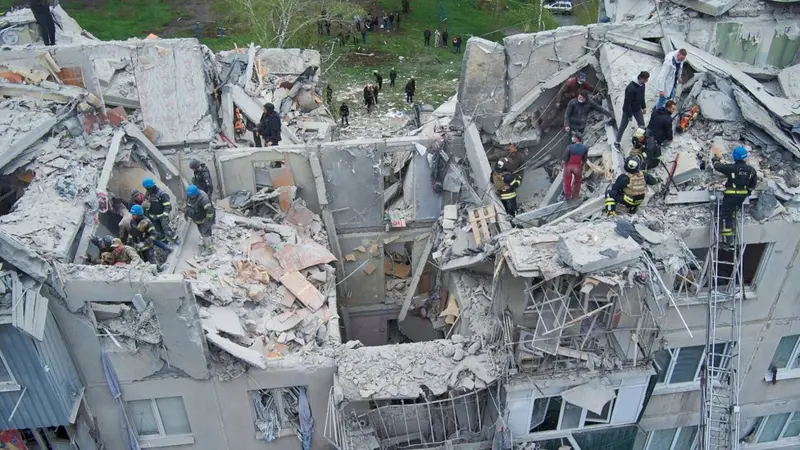
The occupation of parts of the Donetsk region began in the spring of 2014. Under the guise of a “popular uprising,” armed formations operated under the direction of officers from Russian intelligence services and the military.
A key role in starting the conflict was played by I. Girkin, a colonel in the Russian FSB, who, along with a group of armed fighters, seized the city of Sloviansk. This marked the beginning of active hostilities in the Donbas.
Later, regular units of the Russian army became involved, including special forces, artillery, and tanks, providing the fighters with weapons, logistics, and direct command.

By 2015, the “Novorossiya” project had failed: attempts to expand were stopped by Ukrainian resistance and the lack of popular support. In May, the “unification of republics” was suspended.
However, parts of Donetsk and Luhansk remained under pro-Russian control and were effectively occupied by Russia. Thousands of civilians were killed, cities were destroyed, and Crimea had already been annexed in 2014.
Although Moscow denied involvement, international investigations confirmed direct aggression. This failure became a prelude to the full-scale invasion in 2022.
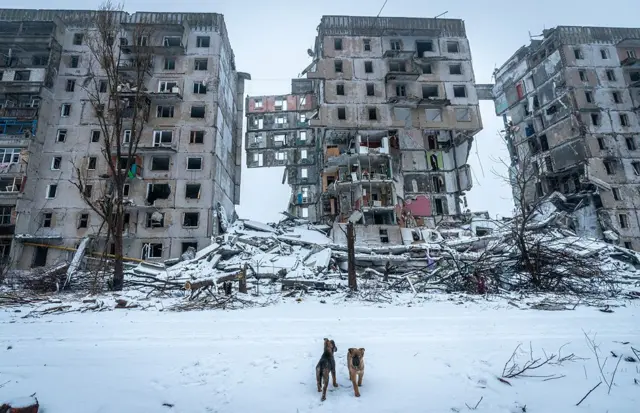
After the fictitious proclamation of the occupied regions of Ukraine as “independent republics” in February 2022, Russia officially recognized the so-called “DPR” and “LPR” as part of its own territory. This marked the beginning of the full-scale invasion of Ukraine.
From the very start, the goal of this war was the total occupation of the country. However, faced with fierce Ukrainian resistance, the Kremlin gradually adjusted its rhetoric. Putin initially claimed the aim was to seize only four regions. Soon after, he again stated that the objective is to take all of Ukraine and that they will not stop.
Fighting, terror, and occupation continue to this day.
